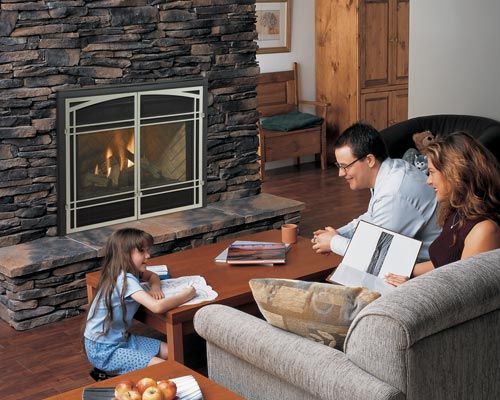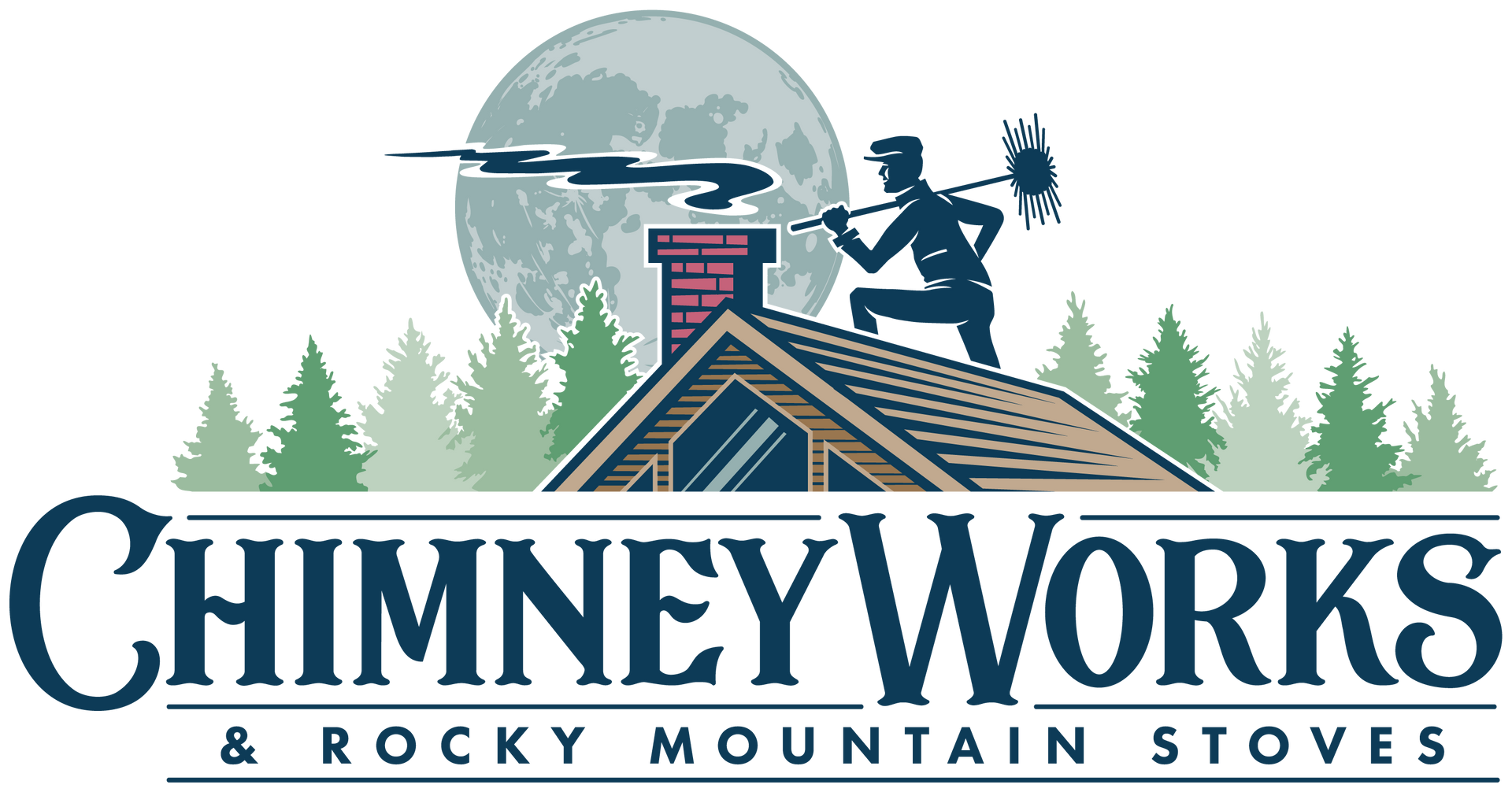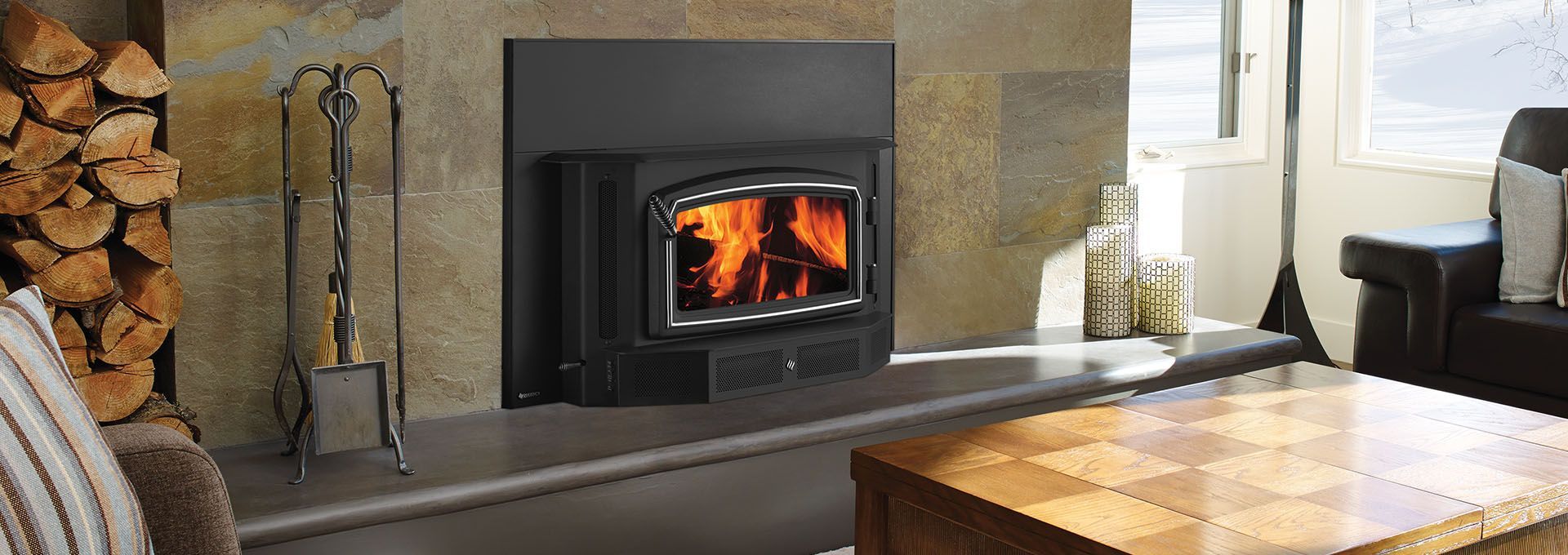QUESTIONS ABOUT FIREPLACES OR SCHEDULING A SERVICE CALL?
CALL US: (513) 790-3200
Chimney Leaks – Common Causes Of A Leaking Chimney And How To Fix Them

When the rain really comes down hard for a few days, Chimney Works sees a sudden increase in calls about leaking chimneys. Many homeowners do not realize that a reputable chimney repair company should be your first call if you suspect your chimney is the source of the leak. How can you tell if your leak is coming from your chimney or from your roof? In order to determine the source, you would need to understand the most common reasons your chimney may leak. If everything with your chimney looks good, then your leak may be coming from elsewhere in your roof structure.
Rain Getting In From The Top
Missing Or Damaged Chimney Cap
Problem: Chimney caps are the first line of defense against rain coming into your home. Without a chimney cap, you are inviting not only rain but birds and pests into your chimney structure. Not only can this cause leaks and the potential for a blockage due to an animal nest, it can also let rain get where it shouldn’t and then freeze, potentially causing damage to your chimney liner’s mortar joints. Chimney caps can blow off or be damaged in storms or can be improperly installed.
Solution: Chimney caps are widely available and your need will depend on what type of chimney and liner you have. Whether you have a traditional clay lining or a stainless steel lining, your cap will be affixed by screws that either go directly into a part of your liner kit or just hold to your chimney flue with pressure when screws are tightened against the outside of the flue. Some chimneys have multiple flues, which allow you to put a larger cover over the top of your entire chimney. The prices for high-quality chimney covers start at around $160 for a single flue chimney cover and around $450 for a multi-flue chimney cover. You will want to choose a high-quality chimney cap, like a stainless steel or copper one, and ensure it is fastened based on the manufacturer’s recommendations. Many high-quality chimney caps come with a limited lifetime warranty, ensuring if you ever have a problem, you will be covered.
Missing Or Damaged Chimney Crown
Problem: The chimney crown is the cement part on top of the chimney. Your chimney is constructed to leave a space around any tile flue liners and the bricks or stone your chimney is made of. Without a crown, rain and pests could come down this space. Over time, cracks can form in the crown due to natural settling or from shrinkage. Even the smallest crack can let water in.
Solution: The solution depends on how bad the damage to the chimney crown is. If the damage is bad enough, the best option is to remove and replace the chimney crown. Most crowns have small cracks and can be repaired with a special elastomeric coating which seals the cracks and stays flexible and waterproof. Even if you have minimal leakage, the small cracks should be fixed as soon as possible to prevent water from freezing in the cracks and making them larger.
Rain Getting In From The Side
Damaged Bricks And Mortar
Problem: Bricks and mortar are porous and by nature allow water in. Over time, water can be absorbed, and when frozen it expands. This expansion can crack bricks or mortar or create spaces where water can get in.
Solution: Once these cracks or spaces are present, water can and will eventually find its way into your chimney and home. To repair cracked bricks, they can be individually removed and replaced by a mason. In the event that you have many cracked bricks, you may get a recommendation to rebuild part or all of your chimney. It’s more likely that your mortar will be the first to show issues as it is weaker than the bricks. For most separations or cracks in mortar, a simple tuckpointing job will do.
Prevention: It’s very important to waterproof your chimney and even more important to ensure that the waterproofing is done properly. First, you will need to consider whether your chimney has been waterproofed before. Water-based solutions are a good choice for first-time applications. Otherwise, you will want to go with a solvent solution. Chimney Saver is an excellent chimney waterproofing product and is available in both water-based and solvent solutions. Once you have selected your product, make sure to follow all manufacturer’s instructions and ensure you apply it at the right time. The last thing you want to do is permanently seal moisture inside of your bricks and mortar.
Rain Getting In Where your Chimney Passes Through Your Roof
Improperly Sealed Or Damaged Chimney Flashing
Problem: Your chimney either comes directly through the roof, or at least butts up against it. This location is an excellent place for water to get in. Masons and roofers prevent water from getting in at these critical points with flashing . Flashing is a strip of metal used to stop water from penetrating the junction of a roof with another surface. Chimney flashing is supposed to be tight against both your roof and the chimney itself. What’s more it is supposed to be sealed, making it airtight and waterproof, directing water away from your chimney and toward your gutters. Regardless of how skilled a mason or roofer is, over time, that flashing will pull away from the surface, either due to the natural settling of your home or storm damage.
Solution : Once flashing starts to pull away, your only option is to have it either replaced or repaired and resealed. There are a variety of products that can be used to seal chimney flashing. We recommend avoiding the tar type sealant and going with something like Flash Seal. This product is very durable and also elastomeric, which means it will flex a bit as your house settles and shifts
Not Rain But Condensation
Condensation Caused By Improper Chimney Lining
Problem: Your chimney area is damp or wet, and you can’t find a reason for it. Everything looks good, but the water still remains, peeling paint or wallpaper and causing mold and mildew. Before you spend a lot of time and money investigating the cause, consider this: Condensation. When air travels up the chimney, it contains moisture. Without a lot of heat pushing the moisture up the chimney and into the atmosphere, the water will settle inside your chimney, condensing and eventually working its way into your home. This happens when either you or the previous homeowner have swapped out a furnace or appliance for a more energy-efficient appliance without making the proper adjustments to the chimney itself. Newer appliances are much more energy-efficient, pushing less heat up the chimney and more into your home. Without the same heat going up the chimney as the old appliance, the water vapor may never fully exit the chimney and end up in your home.
Solution: The proper sized chimney liner will help the cooler fumes created by the more energy-efficient appliance push out the water vapor where it is supposed to be – in the atmosphere. If you have an unlined or large volume chimney with a newer appliance and you think you may have a condensation problem, solve it by having a qualified chimney sweep visit and recommend the proper sized liner for your appliance.
Rain Getting In From Somewhere Else
Not A Chimney Leak
Problem: Water goes where it can go, and people often have a hard time realizing that the source may be far away from the problem. We naturally suspect the problem will be where the visible water damage is. I once visited a neighbor’s house after he told me he had a leak. He was sure that since the leak was over by his stairwell, that the leak must have been from a gable just above. He wanted to call a roofer, but I told him I would take a look. A quick look outside revealed his chimney flashing had pulled away from the roof, and the water was running over 20 feet across his ceiling and exiting near the stairwell. Once the chimney flashing was replaced and resealed there were no more leaks. Likewise, we have been called out on jobs where everyone was sure the leak was coming from the chimney, but ended up coming from the roof itself several yards away. The chimney was just the easiest exit point the water could find.
Solution : Take a moment to inspect the common sources of leaks mentioned in this article. Many problems are visible from the ground, but if you can get on your roof all the better. Trust your gut and make the call. Companies that specialize in chimney repair are the best choice for repairing chimney leaks. Roofers are the logical choice if you suspect your roof has a leak. Hopefully after reading this article, you already have a good idea of where the source of your leak is.
The post Chimney Leaks – Common Causes Of A Leaking Chimney And How To Fix Them appeared first on Chimney Works & Rocky Mountain Stoves.
Search the Outpost






